SQUIRREL_13061624
Unlike the black cab drivers of London, destined to know every street, turn and dead-end in their own city, I have the memory of a goldfish when it comes to navigation, second-guessing how on Earth to get around the city I live in.
To get around this, I have utilised the tried-and-tested method of strapping my smartphone to my bike and booting up a map app. Sure, it works, but not only am I scared for the safety of the device, it is also surprisingly unintuitive, sending me up huge hills, down tight lanes or roads that are simply not made for bikes.
While there are plenty of dedicated sat-navs for bikes, one that particularly caught my eye was the Beeline Velo 2. Simple, easy-to-use and supposedly packed with smart features, I spent some time using this bike tracker to see if it could be the tool that would finally make me a successful city navigator.
Design and features
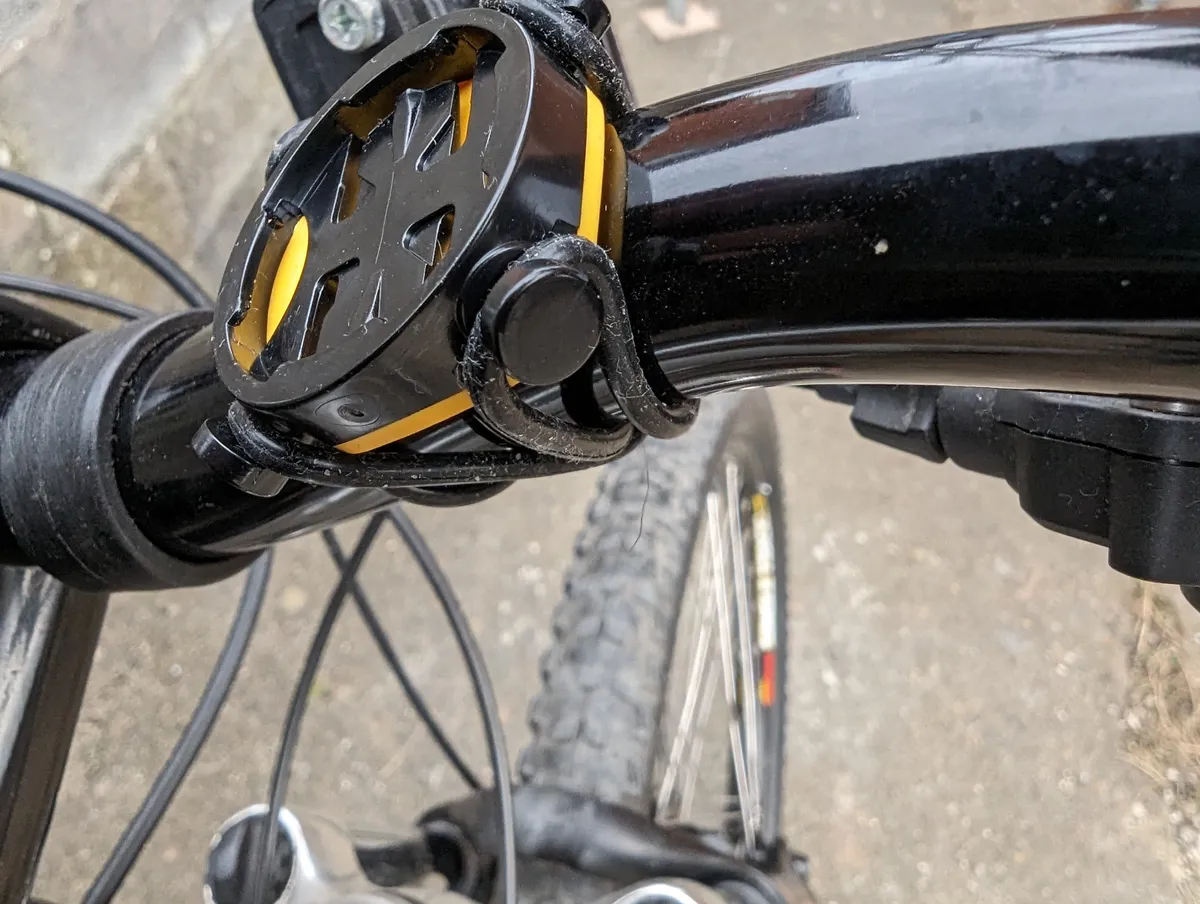
The Beeline Velo 2 is simple in design and structure. It comes in two parts. The device itself features a rounded screen similar to a smartwatch, with four switches on the back. This can be attached to your bike via a piece of plastic.
The watch clicks into this piece with a simple twist, and it stays secure until you twist it back out. With these two parts together, you can apply pressure on the top, bottom, left and right of the device to activate different settings and navigate through the device.
While most devices of a similar nature attach to your bike via a grip, screw method or some other process, the Beeline uses rubber bands. They are sturdy and I was never concerned about the device falling off – but it isn’t exactly the most premium method out there.
Once the device is turned on, you can set a route via the app. The route will then appear on the Beeline. This can be either as a road map, highlighting the road you’re on and when to turn, or simply a compass pointing you in the general direction of your destination for the more adventurous.
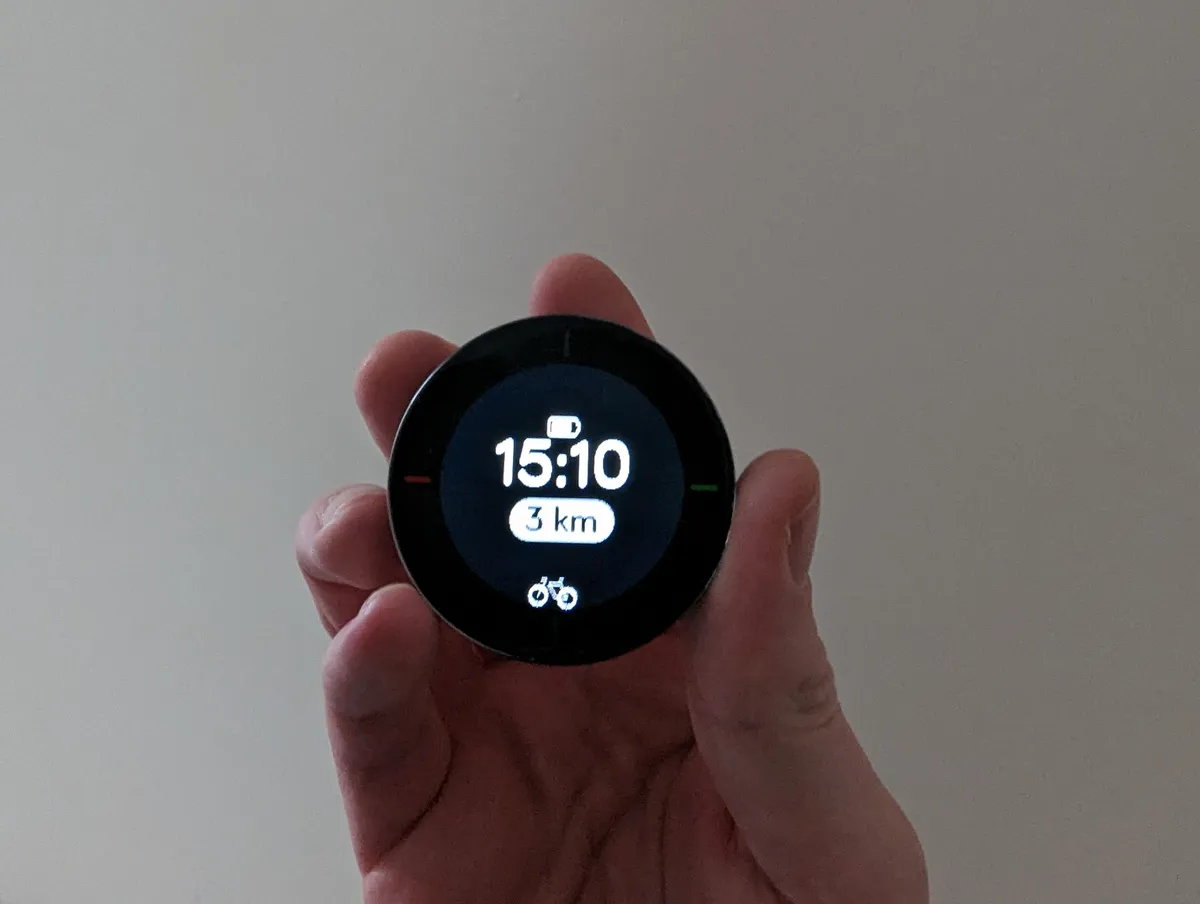
Through clicks of the four buttons on the device, you can also see battery life, stats about your journey, arrival times, average speeds and more.
Using the device
Once the device was set up (which did not take long at all), I used the app to set my first destination. I rode a fairly simple 3km, heading to a nearby shop that I didn’t know the route to.
There is an easy ‘plan ride’ option on the bike. Through this, you are given a map that feels similar to Google or Apple Maps. Enter your end destination and the route pops up on the Velo.
I first used the route tracker, showing a more traditional map on the device with the road I was travelling on and where my turnings were. This was the more useful mode, offering exact turns, distances and a view of the upcoming route.
Helpfully, the Velo makes a beep when you approach turnings to gently remind you when to change roads. However, when I did make wrong turns the tracker could take a long time to recalibrate, especially if I made a few turns before it had decided my new route.
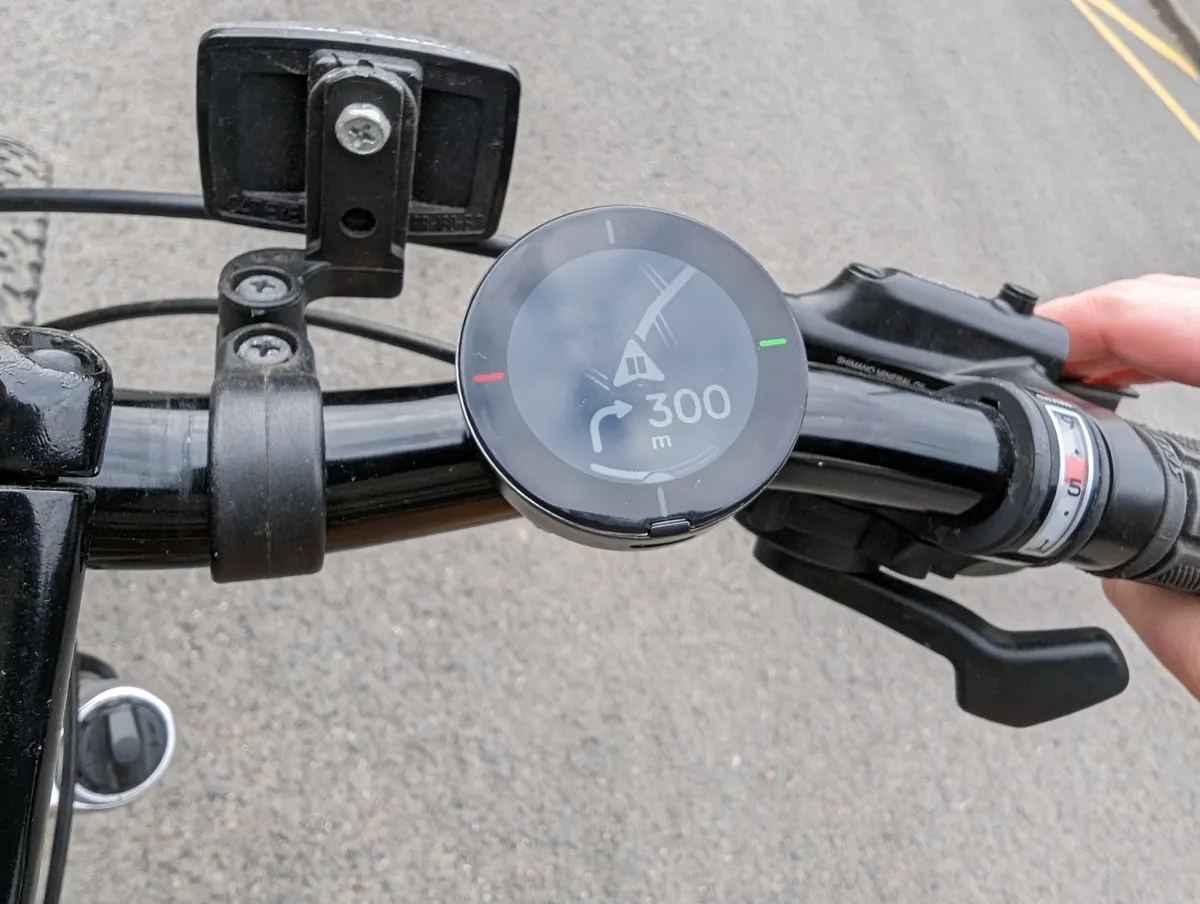
Thankfully I was able to keep to the route the majority of the time, so this wasn’t an issue. It did lead me to try the compass mode as well which I was a big fan of. The device shows a spinning arrow pointing you to your end destination. This allows you to take any road without losing track of where your end destination is.
Whichever navigation mode you use, the map is relying on your smartphone to process the route. For the most part, this is absolutely fine, but if you lose signal and go off the designated route, the Beeline won’t be able to recalibrate. This left me a bit stuck when I once hit a route with a dead-end of roadworks in an area with no signal.
On most of the rides I took, whether within the city centre or on the outskirts, I was given direct and easy routes without any major problems, even when I went off the route slightly and needed to wait for a recalibration.
One of the Beeline’s more interesting features is its rating system. When you take a route, you can rate a section of it as either good or bad. These ratings are fed into the company’s mapping algorithm which, in theory, will give better routes for drivers as time goes on.
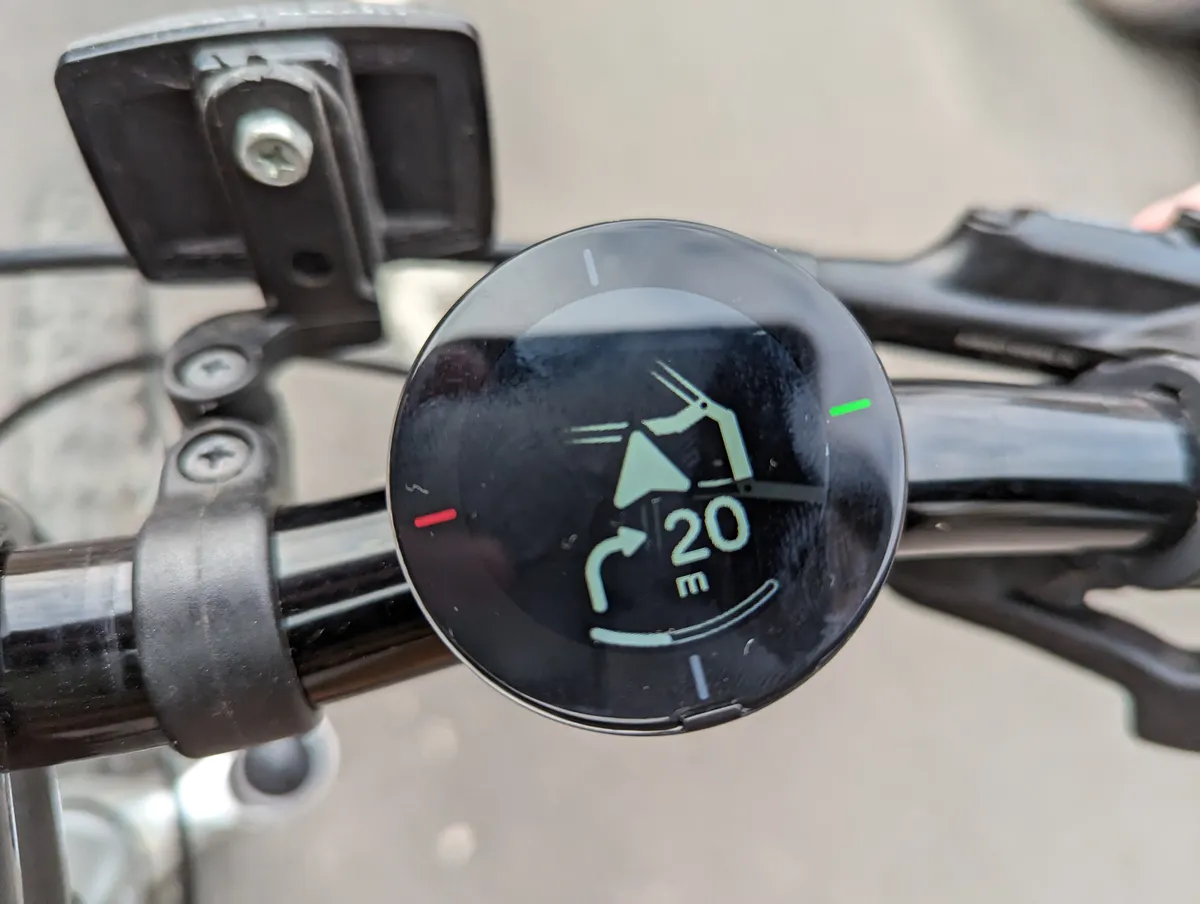
For instance, when I took a ride into work, I came across a tight road up a hill which was not logical for bikes. After down-rating it, the route had been changed next time I took it.
While I mostly used the device for navigation, I also found it handy for quickly checking stats. Especially arrival time, how long I had been riding and my average distance times.
Verdict
The Beeline Velo 2 ticks a lot of boxes. It is fairly affordable, easy-to-use, non-invasive when you’re riding and packed with plenty of features.
Whether I was following the compass or a more direct route on the map, I was consistently happy with the performance of the Velo, and rarely found myself experiencing major issues.
While it isn’t perfect and a heavy reliance on smartphones and mobile signal are reasons not to invest, for the average commuter or hobby cyclist, the Beeline Velo 2 is a great choice.
SQUIRREL_13061624
Alternatives
Garmin Edge 1040 Solar
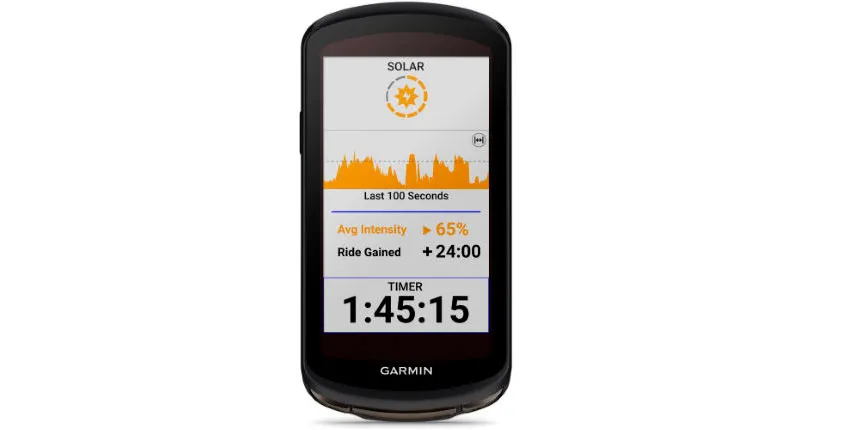
A much more expensive alternative, the Garmin Edge 1040 Solar is for serious bike-riders looking to get an edge in their rides.
Its big selling point is that it charges via solar, meaning if you're taking your bike out on sunny days, you can go days without needing to charge it.
Along with being able to plan routes and show the best directions, this device can also show heatmaps from other riders, display your riding times, speeds and other statistics, and can even show where your weak points were on a route.
SQUIRREL_TEXT_13061646
Sigma ROX 11.1 Evo
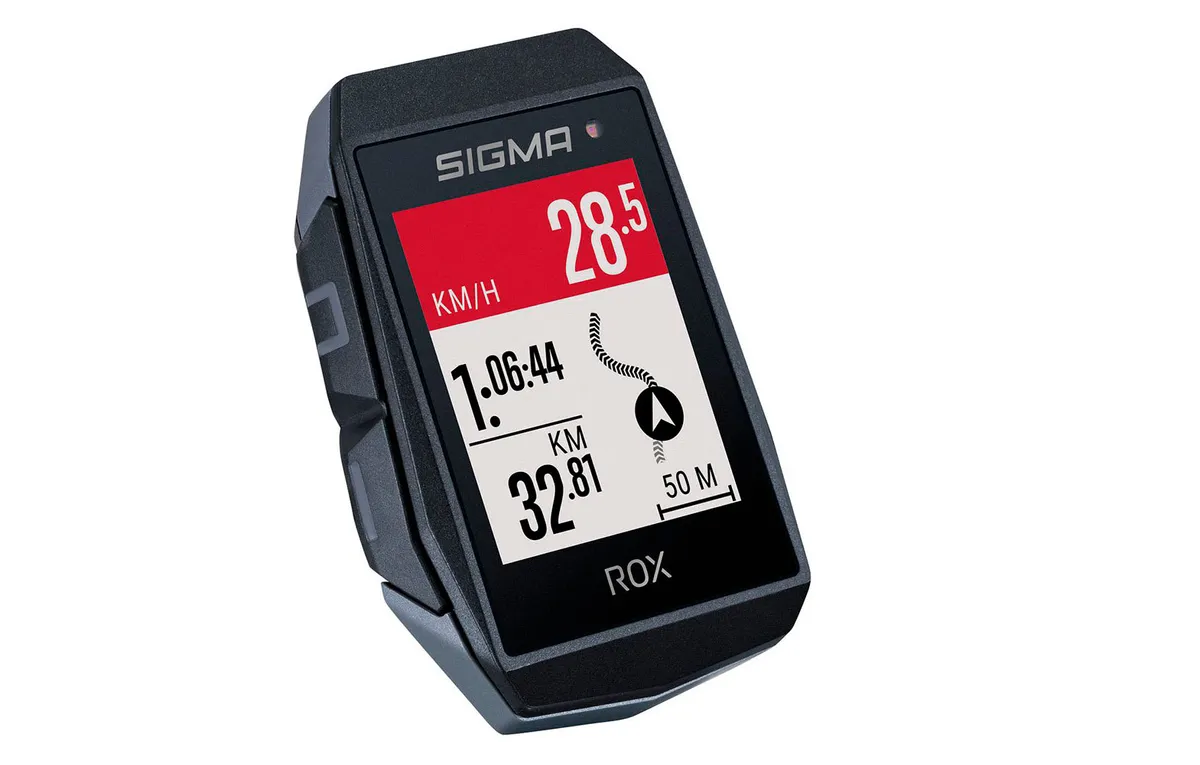
Sitting at a price nearer to the Beeline Velo 2, the Sigma Rox 11.1 Evo is an affordable yet feature-packed bike tracker. It is not a well-known brand but offers a user-friendly interface and some useful training data.
You can put in destinations to be tracked. It only offers small sections of the route like the Velo so don't expect to be doing much forward planning.
There is also the ability to measure the cadence of your ride, check your speed, distance and over 150 other functions to track your performance.
Read more:
